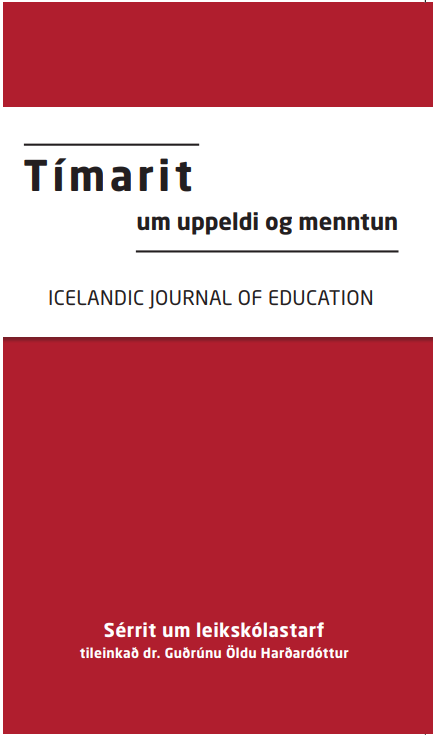Education environment and field trips in the surroundings of schools
DOI:
https://doi.org/10.24270/tuuom.2024.33.12Keywords:
local studies, natural and man-made environment, outdoor education, field tripsAbstract
The main goal of this article is to look at how old ideas about the importance of local studies in schools have been implemented into the education of student teachers. Ideas of utilizing the outdoor environment in education are not new and have been part of human history from ancient times. Steingrímur Arason (1879–1951) was a reformist in education during the early part of the twentieth century and one of the founders of the annual journal Sumargjöfin. He emphazised the importance of working with the child´s social and natural environment and pointed out the significance of outdoor activities, field trips, and learning through observation of the surroundings.
When looking at existing curricula for Pre- and Primary schools in Iceland, it can be seen that Steingrímur’s ideas are still relevant in many ways. Learning in a natural, man-made, and cultural environment was, and still is, meant to be an integral part of all school work. At the Faculty of Education at UNAK, emphasis has been placed on training teacher candidates in local studies, by integrating natural, man-made, and cultural environments. Students work on outdoor projects, both in their local communities and at the university.
This chapter is followed, on the one hand, by a description of a student project where a field trip for preschool children to the area around Hólar in Hjaltadalur is presented. On the other hand, there is a description of outdoor education training for teacher candidates at UNAK in a course called Local Studies. Both descriptions are intended to open the eyes of future teachers to the countless opportunities they have in their communities to work with students in natural, man-made, and cultural environments. Thus, it can be concluded that old ideas about the importance of local studies in schools are being reflected in the education of student teachers nowadays.
Downloads
Published
Issue
Section
License
Copyright (c) 2024 Bragi Guðmundsson, Brynhildur Bjarnadóttir

This work is licensed under a Creative Commons Attribution 4.0 International License.

This work is licensed under a Creative Commons Attribution 4.0 International License.
